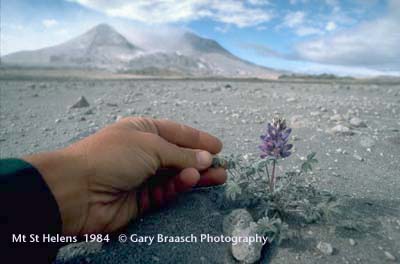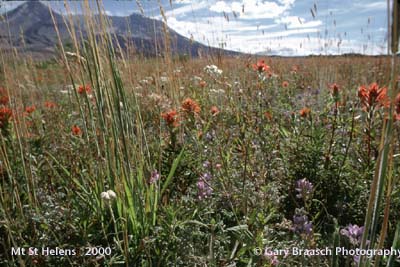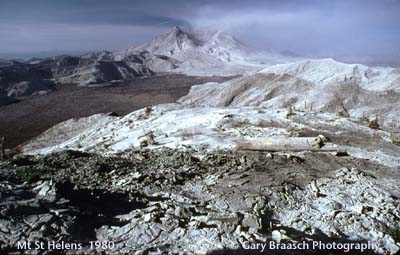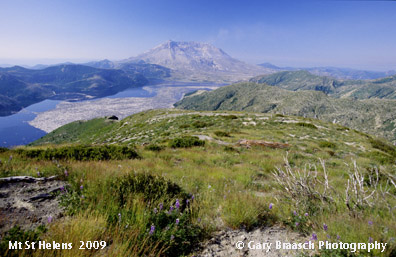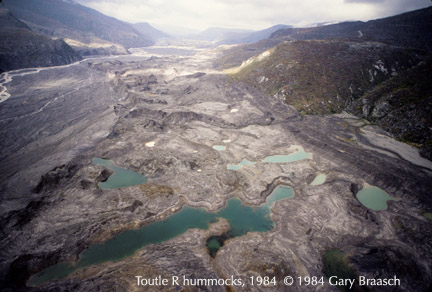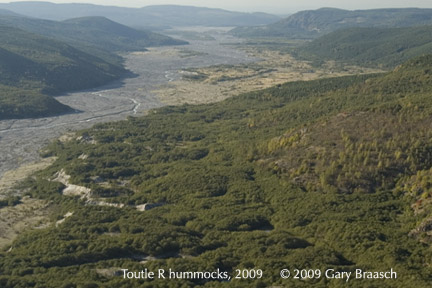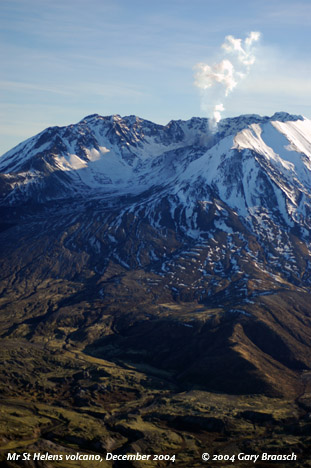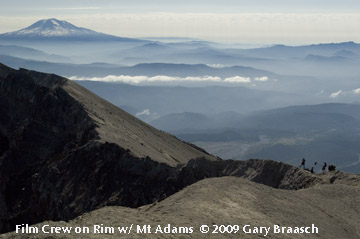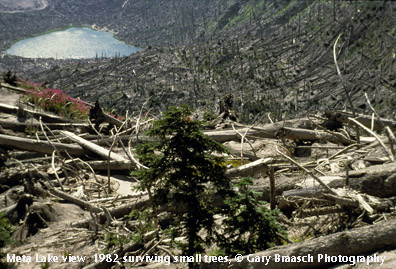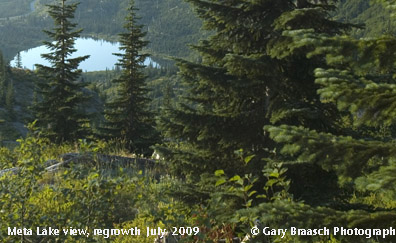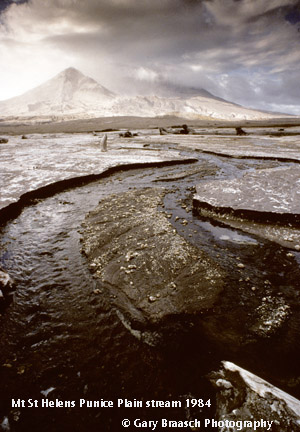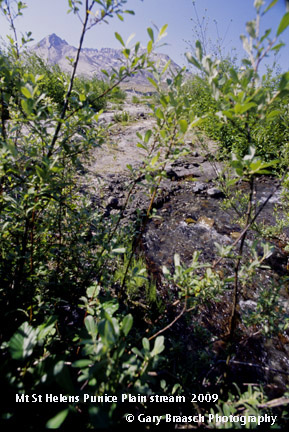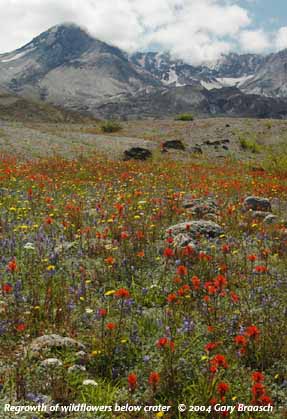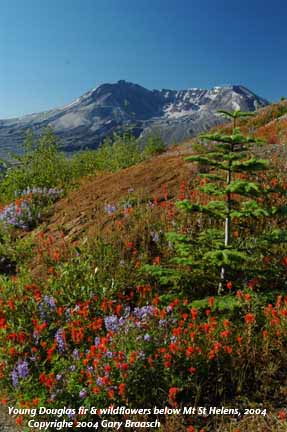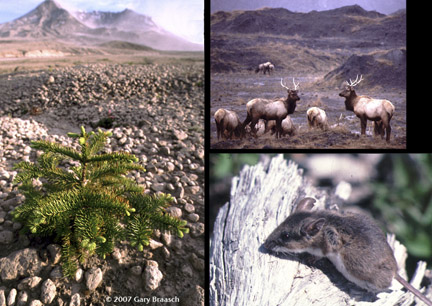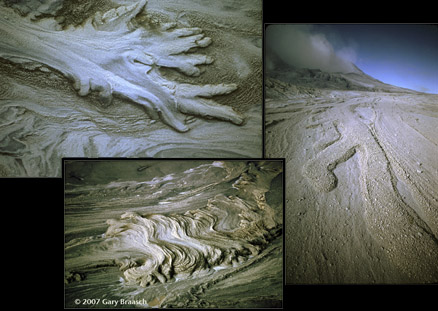Mt. St. Helens
The United States' most famous volcano erupted violently at 8:32 am May 18, 1980. The unexpected lateral blast decapitated the "perfect" peak, buried or blew away 150 sq miles of forest landscape, killed 57 humans, and changed the look and the knowledge of the Cascade Range. It also changed the outlook and psychology of many Northwesterners.
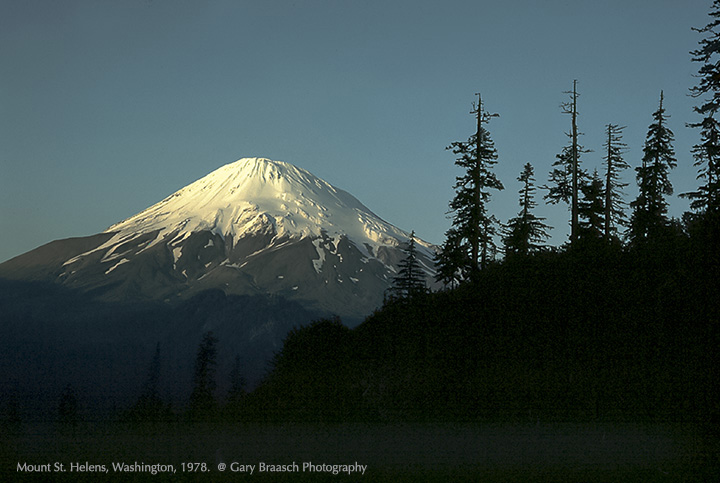
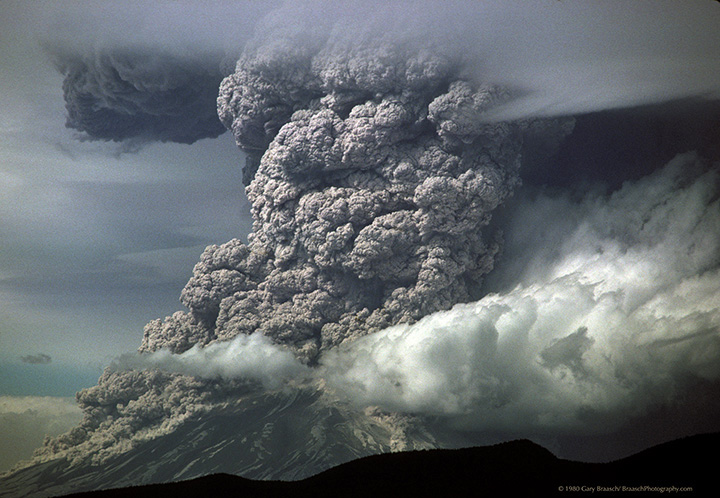
After the eruption, a dome grew in the mile-wide crater, and stabilized in the mid 1980s at about 3,480 feet by 2,820 feet in diameter and about 1,150 feet high. Behind this dome, at an elevation of about 6500 feet and protected from the sun, snow gathered and created perhaps the newest glacier on the planet. It eventually formed two arms in a “collar” around the lava dome.
The volcano shook into action again in October 2004 and by late January 2008 about 125 million cubic yards more lava had erupted onto the crater floor behind the old dome to form a new dome. This is about the same volume as the old dome. The new lava vent extruded huge gray humps that extend hundreds of feet to the south crater wall. This new activity melted the center of the glacier that had begun to form in the crater. Fire and ice -- the million year old story of the Cascades.
As of 2008, the mountain is quiet again. The glacier, now split in two, apparently reacted by flowing faster and the two arms have met in front of the old dome. The once smooth and empty crater is now somewhat less than 10 percent filled with a composite lava dome and twin glaciers with deep crevasses.
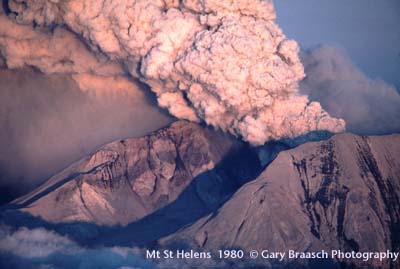
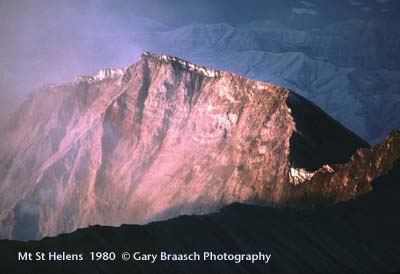
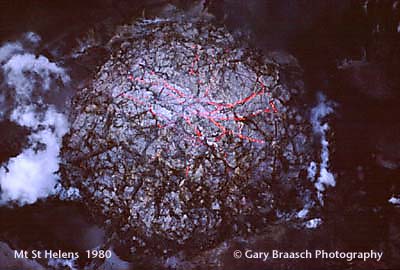
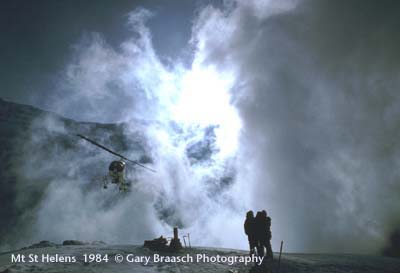
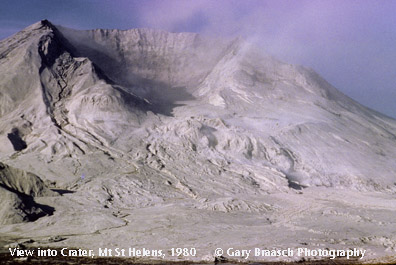
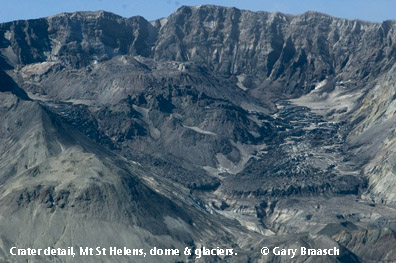
Even though some scientists were quoted in 1980 that it would be years before life returned to the devastated area below the crater, it was clear almost immediately that nature was flowing back into the area. Even before the hot pumice flows cooled, spiders and seeds could be seen blowing in, and birds and elk explored the edges of the blown-down forests. At the time of the May eruption, much of the upland areas still had snowbanks under which many plants and animals like hibernating pocket gophers, were protected from the heat. By August 1980, small trees that had been under the snow were popping up, plants and ferns were pushing green leaves up through the ash and the gophers were digging new burrows, churning and mixing in the ash. Now every species has returned, and species new to the area also have established themselves on the new habitats created by the volcano.
I present a portfolio of old and new images of this volcano. I first photographed it in the 1970s, was present 12 miles south of the eruption in May 1980, and have photographed most years since then. In doing so I honor the three photographers who died at work in the eruption or aftermath, and the other 54 people who perished. I also remember and thank those pilots, geologists, biologists, writers, editors, fellow photographers and friends who have helped me document the eruption and remarkable re-growth around Mt St Helens.
To see a live "volcano-cam" shot of Mt St Helens, please take a look at the Mount
St Helens National Monument site.
